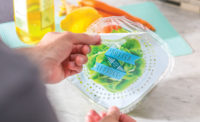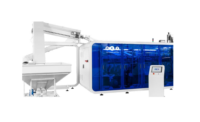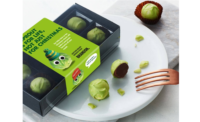While we wait for the FDA to compile and review the responses to its request for comments on Fixed Quantity Unit of Use Blisters Packaging, Docket No. FDA-2019-N-1845 in response to the SUPPORT Act of 2018, we want to take the safer packaging of opioids conversation a bit further.
One of the key points HCPC drove in our docket response was that child safety seems to have taken a back seat in the packaging discussion. Granted, the main issues to be tackled are adult opioid abuse and the oversupply caused by over-prescribing. We applaud the efforts to reduce excess supply in the home, a large source of misused product. We agree reduced quantities of opioids for initial acute care will reduce the opportunity for abuse and development of dependence. Use of unit dose blister will automatically improve the safety of these drugs in the home, but why wasn’t improved child safety another focal point of the legislation? More importantly, why wasn’t more effective child-resistance (CR) for opioids discussed before, given the historic data on accidental exposure?
Close to 6,000 children visit emergency rooms every year due to accidental opioid exposure, mostly children under 2. This statistic alone should have been enough for regulatory agencies to call into question the current form of CR packaging supposed to protect children from accidental exposure, long before the SUPPORT legislation arrived in Washington, D.C. “Why are all these kids ending up in the ER? Why did the CR closure not provide the required protection?” We all can imagine what happened in these homes: The ubiquitous amber vial with CR cap was either not properly reapplied or not applied at all. If that is the case, the conclusion is that this CR closure, which requires human intervention for maintained safety, is not adequate for this drug class and many others.
Consider the following:
- The opioid crisis is leading to more accidental poisonings
- The opioid crisis has made accidental poisonings an even greater concern. A study published in December 2016 in the Journal of the American Medical Association Pediatrics found hospitalizations for opioid poisonings increased nearly twofold between 1997 and 2012. Although hospitalization rates were highest among older adolescents, the largest percentage increase of hospitalizations occurred among toddlers and preschoolers.1
This seems to be the same conclusion reached by the University of Manitoba’s Children’s Hospital regarding iron tablet poisonings and the change to unit dose in the early 2000s.
- June 2005, Unit-Dose Packaging of Iron Supplements and Reduction of Iron Poisoning in Young Children
- “Unit-dose packaging may be more convenient than conventional medication containers because there is no need to reengage the child-resistant closure. Unit-dose packaging is a true primary prevention intervention because each tablet is individually protected, rather than all tablets in a container being communally protected by a single child-resistant closure.2
This concept of automatically providing safety when people fail to provide it on their own is not new. Automotive safety features perform when humans do not: anti-collision braking, lane monitoring, seatbelt warnings when you forget to buckle up.
These changes are not immediately embraced by the industry or the public. Invariably changes are too expensive, unnecessary, too burdensome.
Unit dose packaging has already demonstrated its ability to save lives from iron tablets to buprenorphine naloxone to levothyroxine. Why do we need more evidence? Is it so difficult to spend a few pennies for safer packaging for our children?
The absolute failure of standard CR caps is well known and documented. Certain drugs have already provided children with a safer home environment. Data demonstrates reduced adverse events post-packaging changes.
Why haven’t opioids fallen into the same category? Safer child packaging via unit dose should be mandatory across all SKUs of opioids, not just immediate release for acute care. We need to do better — our children are depending on us.
- Report: Child-proof drug packaging does not halt accidental poisoning. Avoiding accidental poisoning among children younger than 6 might not be as simple as storing medicine out of reach, according to a new report from Safe Kids Worldwide. nurse.com/blog/2018/03/30/report-says-child-proof-packaging-does-not-halt-accidental-poisoning/
- Ref: jamanetwork.com/journals/jamapediatrics/fullarticle/486039; Milton Tenenbein, MD, Department of Pediatrics, University of Manitoba Children’s Hospital, 840 Sherbrook St, Winnipeg, Manitoba R3A 1S1, Canada



